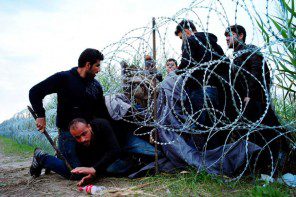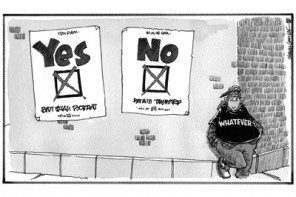Electorates in South Asia have spoken. Elections held in eight countries between May 2013 and January 2015 have resulted in the defeat of the incumbents in all but one country. The countries where these elections were held are: Afghanistan, Bangladesh, Bhutan, India, Nepal, Maldives, Pakistan, and Sri Lanka. Three of these elections were for parliaments in a parliamentary system, three were for Presidents in presidential system; one was for aConstituent Assembly, and one for a parliament under a monarchical system. The exception to this trend is Bangladesh, where the incumbent secured a second term in a controversial election boycotted by almost all opposition parties (Table 1). If we take Bangladesh out of the equation, for the moment, there seems to be a consistency: South Asian electorates have spoken in clear and unequivocal terms. Notwithstanding the specific political dynamics of each country, one can ask whether there is a common message in these results. Looking at the broad picture, one can easily conclude thatanti-incumbency was the order of the day. But is there anything more to these results? What regional implications might they have?
Table 1
Elections in South Asia: 2013-2015
| Country | Date | Nature of Election | Incumbent | Winner |
| Afghanistan | 5 April 2014 (run-off 14 June) | Presidential | Hamid Karzai | Ashraf Ghani |
| Bangladesh | 5 January 2014 | Parliamentary | Awami League (AL) | Awami League (AL) |
| Bhutan | 31 May 2013 (13 July) | Parliamentary | Bhutan Peace and Prosperity Party (DPT) | People’s Democratic Party (PDP) |
| India | 7 April – 21 May 2014 | Parliamentary | United Progressive Alliance (UPA) led by Indian National Congress (INC) | National Democratic Alliance) led by Bharatiya Janata Party (BJP) |
| Maldives | 7 September 2013 (run-off 9 November) | Presidential | Mohammed Waheed | Abdulla Yameen |
| Nepal | 19 November 2013 | Constituent Assembly | Communist Party of Nepal (United Marxist-Leninist) (CPN (UML) | Nepail Congress (NC) |
| Pakistan | 11 May 2013 | Parliamentary | Pakistan Peoples’ Party (PPP) | Pakistan Muslim League (Nawaz) (PML(N)) |
| Sri Lanka | 8 January 2015 | Presidential | Mahinda Rajapaksa | Maithripala Sirisena |
Note: The table excludes the elections which had no political significance for the purposes of this essay. For example, the Presidential election in Pakistan (held on 30 July 2013). This was an indirect election which delivered victory to the PML Candidate; similarly the parliamentary election in Maldives (held on 24 May 2014) has been excluded as the country has a Presidential system of governance. In Afghanistan, the incumbent was precluded from running for a third term, in the Maldives, the incumbent President secured the third position in the first round of voting and was excluded from the run-off.
The Results
The Pakistan Peoples’ Party (PPP) was the first among the incumbents to be shown the door when its rival the Pakistan Muslim League (Nawaz) secured 166 seats in the National Parliament. Although the PML(N) was short of the 172 seats needed for a majority, it gathered support from independent members of the parliament to claim the seat of power. A thirteen percent swing away from the PPP added 77 more seats to the PML compared to the last election held in 2008. The Constitution required two rounds of voting to determine the winner in Bhutan, where the second parliamentary election was held since multi-party democracy began in 2007. In the first round of the elections, the ruling Bhutan Peace and Prosperity Party was ahead of its rival the People’s Democratic Party (PDP), with 44% and 32% of votes respectively. The second round delivered 32 out of 47 seats to the challenger with 54% votes: a dramatic result as the PDP previously had only two seats.
The third election in South Asia was in the Maldives. The 2011-12 political crises led to the resignation of then President Mohamed Nasheed. Vice-President Mohamed Waheed Hassan, who took over the Presidency, was compelled to arrange a snap poll due to street agitation and international pressure. The events leading to the election weren’t free from controversy. But the two rounds of election voting brought some stability. The first round gave a huge lead to Nasheed but was short of the 50 percent required under the constitution. The second round result brought a complete reversal. Abdulla Yameen emerged victorious. Nepal, where the Constituent Assembly (CA) had been struggling to frame a constitution since the last election in 2008,held its election in late 2013. The election comprises both the First-Past-The-Post (FPTP) and the Proportional Representation (PR)systems. The United Communist Party of Nepal (Leninist), which had a majority in the CA elected in 2008 suffered a setback – from 229 seats to 80 seats, and was relegated to the third position.
The parliamentary election in Bangladesh, held on 5 January 2014, drew international attention due to heightened violence and the boycott of the opposition parties, including the largest opposition party the Bangladesh Nationalist Party (BNP). The result was predictable even before a single vote was cast. The ‘exceptional’ result retained the incumbent BangladeshAwami League in power. Election to the Afghan presidency was bound to be an issue of great interest for several reasons. With the imminent withdrawal of the International Security Assistance Force (ISAF) this was seen as a test for the Afghan security forces as the previous presidential election in 2009 was marred by fraud and irregularities. But the election seemed to become an unending process. The first round, held on 5 April 2014, ended with Abdullah Abdullahon top with 45% votes, while his rival Ashraf Ghani received 31% of votes. As required by the constitution, the second round was held in June, but only produced a stalemate . As in the Maldives presidential election, there was a reversal of results in the second round. Both claimed victory and allegations of rigging werelevelled against both. External intervention, particularly from the United States, helped to break the stalematesome months later. Finally Ashraf Ghani was sworn in as the President in September but only after a power sharing deal was reached.
By then the electorate of the largest democracy of the world, by the measure of the number of registered voters, had spoken: the Indian National Congress (INC) led United Progressive Alliance (UPA) lost. The National Democratic Alliance (NDA) led by the Bharatiya Janata Party (BJP) secured a decisive victory and controversial figure Narendra Modi became the new Prime Minister. Of the 543 seats up for grabs the NDA was elected to 336 seats with the BJP alone having 282 seats. The UPA had only 60 seats including the INC’s 44 seats.
The most dramatic result came last, on 8 January 2015, in Sri Lanka. President MahindaRajapaksa called the election two years ahead of schedule, hoping for a repeat of 2010, only to be defeated by his one-time colleague MaithripalaSirisena. The first round was enough to dislodge the incumbent, as Sirisena bagged 51 percent of popular votes. Rajapaksa’s share of the popular vote dropped about 10 percent compared to 2010.
The ‘exception’?
As mentioned, Bangladesh stood out as the anomaly in the picture. But whether the result should be considered is an open question. Not only was the parliamentary election boycotted by the opposition parties, to be precise 28 out of 40 parties registered with the Election Commission, more than half of the members of parliament- 153 out of 300-were the only candidates for their seats, practically disenfranchising more than 50 percent of voters. These facts led many to describe the election as ‘merely selection.’The country was rocked by violence for months prior to the election. The death toll was as high as 123people before the election and scores onElection Day itself and afterwards. The turnout wasa record low, about 22 percent according to the international media; a precipitous drop from 78 percent in 2008.
Real exceptions
Some of these elections were historical, by a number of measures. The election in Pakistan ensured a peaceful handover of power from one elected civilian regime to another, an unprecedented event since the founding of the country in 1947. In India, a return to a single-party majority government for the first time in 25 years makes this election historic. It should be also be mentioned that, thanks to the FPTP system, no party in the history of the nation has ever before won more than half of the seats with a vote share of only 31 percent. Indian National Congress suffered its worst electoral defeat ever. Bhutan’s change of power in parliament is indicative of a slow but steady process of democratization.
The message
The political contexts of each of these elections are different and different dynamics played out in each of these countries but there are some commonalities that one can hardly ignore. The electorates, at least in three major countries, had rejected parties tainted with corruption. The UPA government in India was plagued by a number of high profile scandals; the 2G and S-band spectrum scandal, the Rolls-Royce defense scam, the Commonwealth Games scam, to name but a few. According to a Gallup poll in 2013, three-fourths of Indian adults aged 18 to 34 believedthat corruption waswidespread in their government, nearly identical to the percentages of similarly minded adults aged 35 to 54 (76%) and 55 or older (72%). In Pakistan, many consider the PPP regime between 2008 and 2013 as the worst in regard to corruption. Although Nawaz Sharif was charged with corruption during his tenure in power, many Pakistanis considered him a better alternative.
As for Rajapaska, nepotismwas a hallmark of his decade long tenure. With one brother leading the defense forces (Gothabaya), another responsible for economic development (Basil), the third the speaker of the assembly (Chamal), and his son (Namal) groomed to succeed him, it was a blatant display of nepotism and abuse of power. His style of governance wasmarked by authoritarianism. He ended the civil war with Tamil secessionists, but did it with such brutality that he faces widespread allegations of war crimes. His reelection in 2010 may have convinced him that he had the necessary support. But in addition to nepotism, Rajapaksapushed through constitutional amendments to stand for a third term in power and rolled back an earlier amendment that de-politicized appointments to the police and judiciary.The defeat of the incumbent President of the Maldives, to some extent, reflects the popular aversion to usurpation of power.
The legacy of the Karzai regime that continues to dominate Afghan politics is corruption. Turning a blind eye to corruption in the early days of the Karzai regime, his western backers have helped to institutionalize it. The issue played a significant role in the Afghan election.
While there is no denying that one election will not end corruption, especially when apolitical system has all the hallmarks of a kleptocracy, these elections show that the citizens of South Asia are perennially hopeful in this regard. As such, these results are, to a great extent, a rejection of corruption, nepotism and authoritarianism.
There is an interesting and conflicting trend that warrants our attention. In India and Pakistan, the factors which are cited as critical in defeating the incumbent regime include the economic performance of the outgoing government. The BJP made the recent slowdown of theIndian economy a central issue of its election campaign and touted the so-called Gujarat model of development as the solution; in Pakistan the PPP was portrayed as a failed manager of the economy. The successes of the BJP and PML(N) may provide an impression that economic wellbeing could have saved these parties from defeat. But the defeat of Rajapaksa tells a different story. Harash Pant, an Indian analyst, reminded us that, ‘The Sri Lankan economy has seen robust annual growth at 6.4 percent over the course of 2003 to 2012, well above its regional peers. Following the end of the civil conflict in May 2009, growth rose initially to 8 percent, largely reflecting a “peace dividend,” and underpinned by strong private consumption and investment.’ Yet the opposition could convince a majority of the electorate to choose a new leader.
Procedural Democracy working (?)
One can ask whether these elections, particularly the victories of the opposition and their acceptance by rivals, demonstrate that democracy is maturing in South Asia (except in the case of Bangladesh). The question is worth exploring and requires more than just looking at the elections. There is no doubt that substantive democracy, that is the rule of law, separation of powers,transparency, and the protection of basic liberties of speech, assembly, religion, and property are still elusive in almost all of the South Asian countries.
There is a long way to go before one can view the region as a bastion of democracy. Support for the procedural elements of democracy on the part both of citizens and political elites are crucial to democratic institutions and stability. In that measure these elections show some positive developments. However, the Bangladesh experience indicates how easy it is to reverse the process. The country which experienced a transition from a military regime in 1991 slid to a democratic hiatus in 2007 and returned to the democratic path in late 2008. But within six years it had taken a reverse course. The bare minimum requirements of procedural democracy, an election with participation from the opposition and ensuring citizens’ rights to vote, were trampled upon.
The Maldives presidential election also revealed, according to the Economist that , ‘biased courts and an establishment set on shaping election results underscores how its institutions are not properly independent yet.’ Afghanistan’s election, particularly the controversies that resulted in the months of stalemate, is another example of the challenges of democratic transition. There are allegations of irregularities in the Nepalese election, which the Nepal government has promised to investigate. Bhutan’s slow progress, although under the shadow of the monarchy, is a step in the right direction.
However, the fragility of the practice of democracy in South Asia is revealed by the events in Sri Lanka. Although the handover of power was quick and peaceful, it became known afterwards that Rajapaksa tried to stage a coup to stop the process. Media reports suggest that Rajapaksa had tried to persuade army and police chiefs to help him thwart the election outcome.The bid crumbled only when the Army Chief declined to intervene. This reminds us that in some countries in South Asia the military is a force that can and does play a key role in politics.
Regional Implications
It is well known that the election in Afghanistan has implications for South Asia and beyond. Prior to the election, many argued that Pakistan would not like to see Abdullah in power as he is close to India, its arch rival. Now that Ashraf Ghani is in power, we will have to wait to see how the new situation plays out. It is well to bear in mind that regional powers including Iran, China, Pakistan and India jostle for influence in Afghanistan. The Afghan election hasn’t tilted the policy in one or the other direction. This cannot be said about other elections in South Asia.
The defeat of Rajapaksa can be viewed as a boon for India, as Sri Lanka had developed a closer relationship with China in recent years. China struck deals with Mr. Rajapaksa’s administration to fund large infrastructure projects such as highways, a major port and airport and a coal-fired power plant. The recent visit of a Chinese attack submarine to Colombo irked India. In the last days of 2013, as the Bangladesh election was approaching, many nations called for a dialogue between the ruling party and the opposition to ensure an inclusive election; but India took a different stand. It sided with the ruling party and encouraged the AL to go ahead with the election. The unqualified support to the AL was because of its warm relations with the Indian government. Since the 2008 election which brought the AL to power, India has benefited immensely although many legitimate concerns of Bangladesh have been overlooked. Thus the continuation of the AL is a positive development for India. Although the Nepalese government comprises both the Nepal Congress (NC) and UCP (L), it is a welcome development for India because of its cordial relationship with the NC. In Bhutan, the victorious PDP promised stronger ties with India. Shortly before the election, India decided to withdraw subsidies on liquefied petroleum gas and kerosene to Bhutan. This moved Bhutan’s relations with India higher up the electoral campaign agenda. Critics argued that it was a deliberate move by New Delhi to influence the results. Indian officials denied these allegations, saying the subsidies lapsed automatically as Bhutan’s five-year economic plan ended in June 2013. The exception to this trend was the defeat of Mohamed Nasheed in the Maldives. Nasheed is known to be close to India and there were major investments from India to Maldives during his tenure some of which were scrapped by his successor. In recent years China has made significant investments and is said to have a better relationship with the present regime.
Conclusion
The eight elections held over a twenty month periodbrought some issues to the forefront which deservethe attention of observers of South Asian politics. The results have clearly shown that the anti-incumbency sentiment was rife across the region. Electorates have sent parties and rulers packing who previously had their unequivocal support. This underscores the importance of free and fair elections; given an opportunity the citizens are willing to make the hard choices. This gives cause for optimism about the outlook for democratic processes in the region. Generally speaking, politicians are ready to accept the defeat which is an essential part of the democratization process; otherwise the election’s legitimacy diminishes and the political system facesconflict and instability. But there are leaders who have demonstrated their proclivity towards use of force and unconstitutional measures. This gives cause for concern.Rajapakse in Sri Lanka was elected with popular support, but he abused the trust of the voters to amass extraordinary power through manipulation of the constitution and intimidation. Without vigilant citizens, this remains a possibility, especially given the history of South Asia. A similar situation is being played out in Bangladesh.
The weaknesses in the electoral system are worth noting. In some instances, constitutional and electoral processes have been manipulated (Bangladesh being an obvious case), in other instances it produced stalemates. These call for reforms in the electoral system.
As for the message of the electorate, there is unequivocal rejection of corruption and nepotism. The poor results of the Indian National Congress should serve as a warning. The results in India, Sri Lanka, and in part Pakistan are also a denunciation of dynastic rule. Political elites and parties should take serious note of these messages which can be ignored only at their peril.
India, as a regional power, has emerged as the potential beneficiary of these election results. Allegationssurrounding its intervention, in at least two cases, do not bode well. One can only hope that India will use its influence to promote greater regional understanding, deepening of democracy and a better appreciation of popular aspirations. A myopic policy will not only hurt the respective countries but the behemoth itself.
The writer is Professor and Chair in the Department of Politics & Government at Illinois State University.






